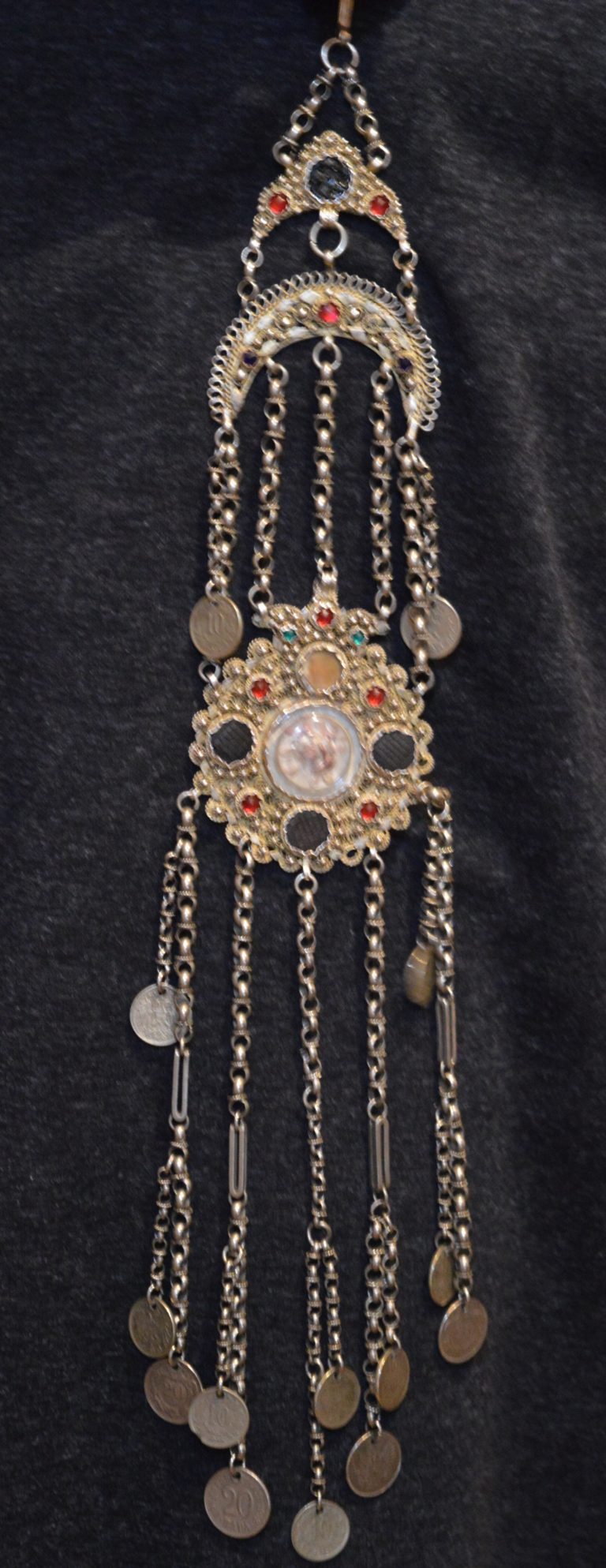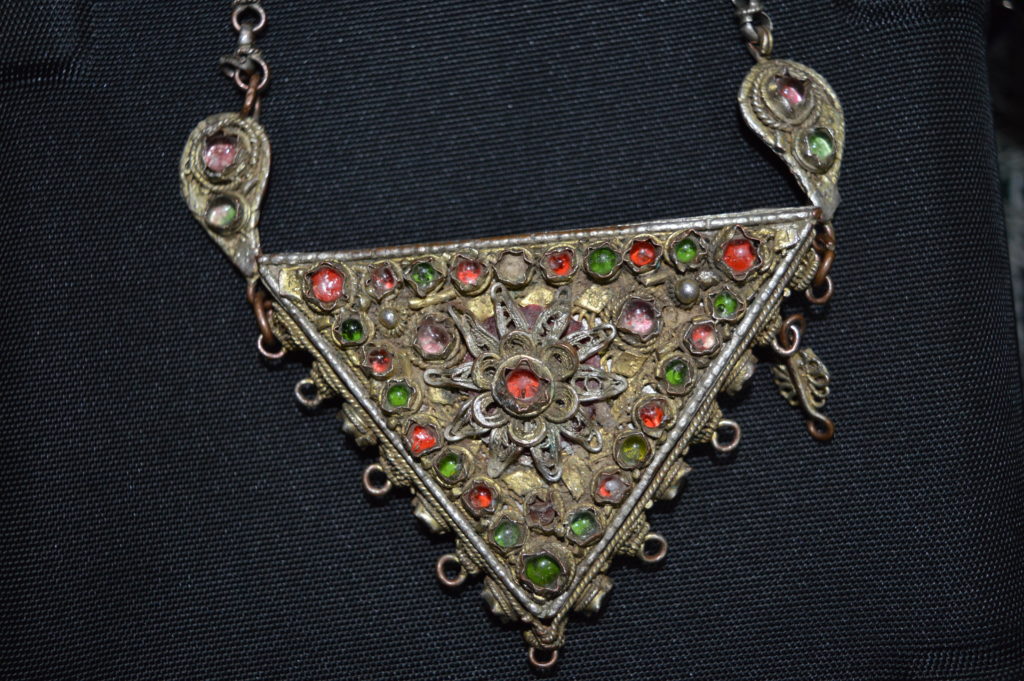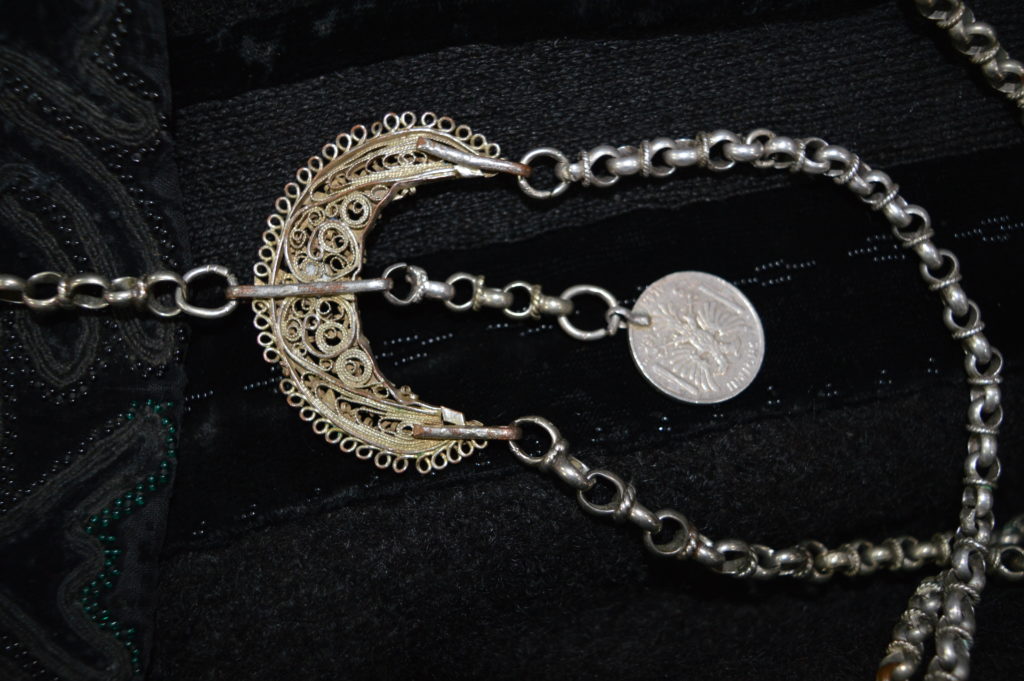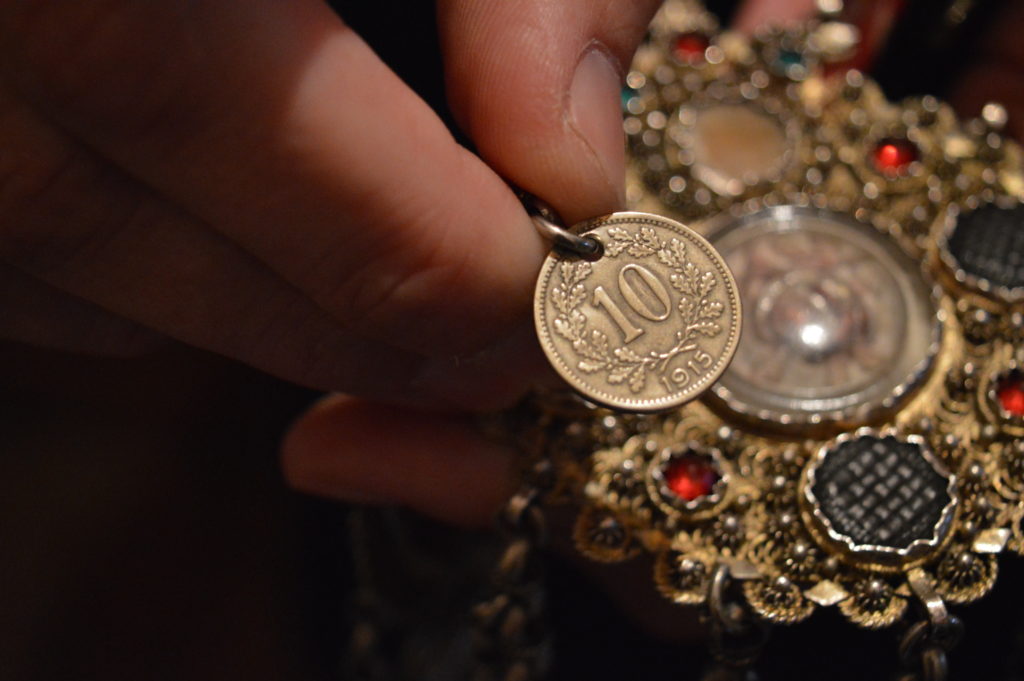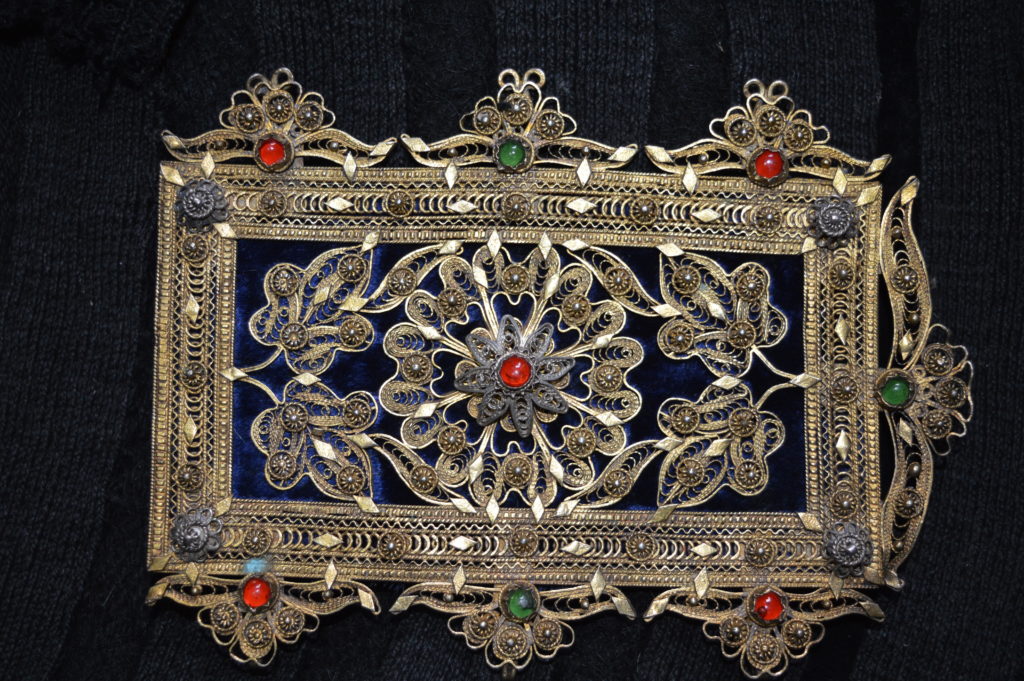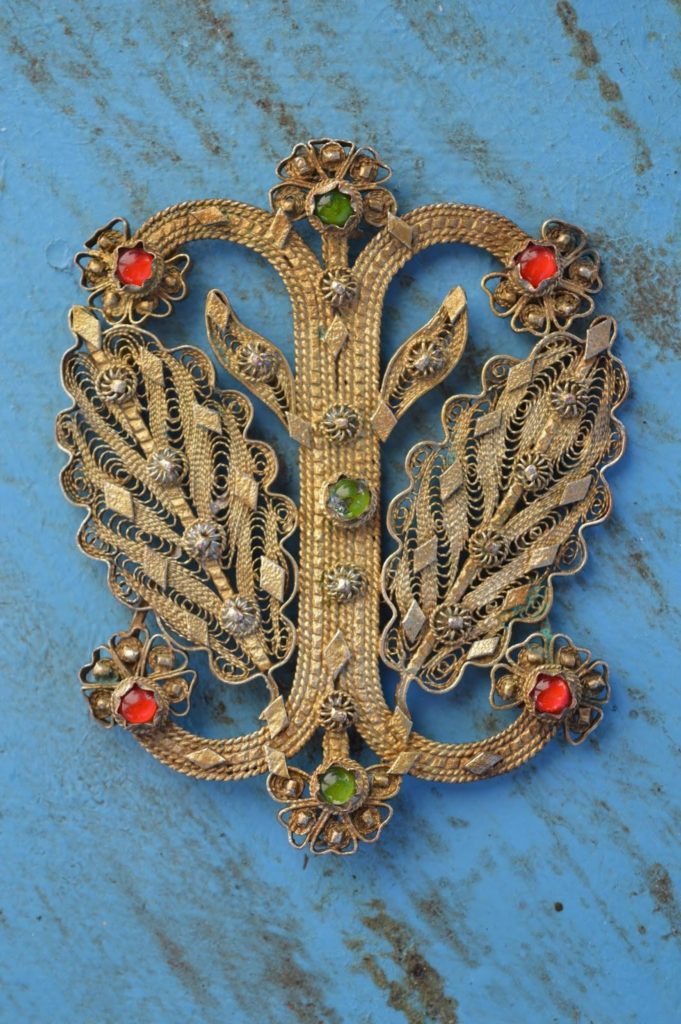Parts of the Xhubleta
The xhubleta is a complex dress that is mostly known for the beauty of the skirt, but is made up of a variety of intricate components. Women crafted their xhubleta with the help and guidance of their mothers, learning to make the xhubleta at a young age. They would begin in childhood and continue to make them throughout their lives. Women created each piece themselves, decorating each with beading and embroidery. The symbols sewn into the xhubleta were dependent on the woman, each choosing motifs and designs they felt expressed themselves. Many of these represented the beauty they noticed in nature around them. Although they were able to choose many of the designs on their dress, there are some symbols that were commonly used and expected on each piece of the xhubleta.
The city of Shkoder was a center of trade for the rural communities of northern Albania. Under Ottoman rule, artisans here produced products such as arms, silk, and silver. Traders from the Balkans convened, and by the mid 1800s, structure had built up around this economy to include courts and administrative bodies for trade (Knowlton, 2004). Families from northern villages would travel to Shkoder to trade and acquire goods they could not produce themselves (F. Nika, personal communication, Nov. 6, 2018). This included decorative pieces such as beading, ornamentation, and coins that could not be produced by the family.
“Where the beads from, local or traded? These beads that decorate the postova, where were they taken?”
“They bought it, bought it in stores in that time… Are they from Albania or abroad?…I don’t know, they bought it in Shkodra and brought them here, look how they used it. Beads are bought in a shop in Shkoder even in that time [300 years ago]”
– File, 2018
Skirt
The largest and most complex component of the xhubleta is the skirt. Like most of the dress, it is made entirely of wool. The skirt is made with many different layers of spiku and felt (Nını, 2018). The spiku is the name for a special type of thread made from a complex braid of sixteen separate strands of wool (Vuktilaj M., 2018). The felt is made by layering combed wool together, while pressing and soaking it to tighten the fibers (Shkurtaj, 2018). It is alternating layers of these materials that give the skirt enough stiffness to hold its form, but the flexibility for movement. A diagonal, rather than straight, sewing technique gives the skirt its bell shape and allows a graceful wavelike movement of the garment (Dukgilaj, 2018).
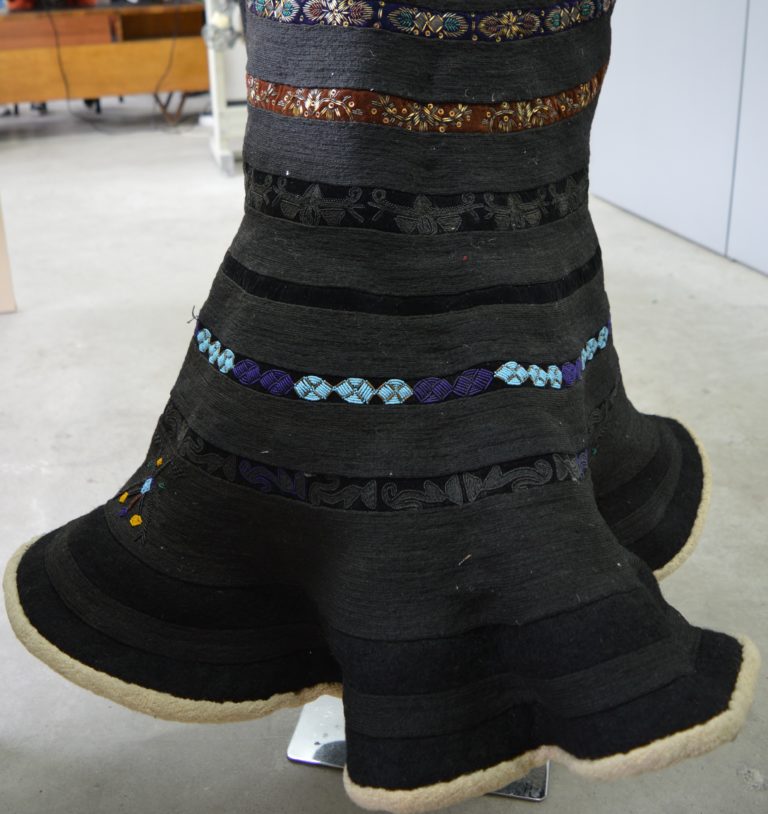
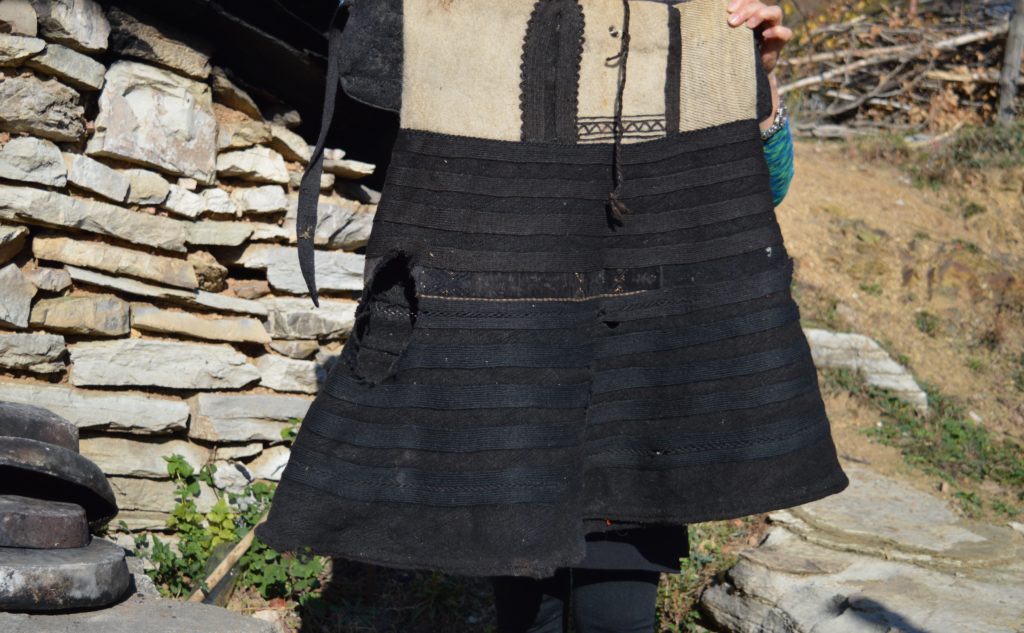
Some of the felt strips had a row of symbols embroidered onto them. The number of rows of symbols was an indicator of social standing and wealth, with more beading showing a higher status (DRKK, 2018). These symbols are only visible in the back of the skirt when worn, as it was not covered by other components of the dress. Many of the symbols themselves do not vary much over time due to their origins in nature. However, no piece was identical to another, as they were carefully embroidered with chosen symbols (Vuktilaj M., 2018).
The Apron
Placed on top of the skirt is the apron, or pështjellaku. Similar to the skirt, it is made completely from wool and is adorned with complex symbols and patterns mostly chosen by the maker to fit her tastes (Shkurtaj, 2018). A pattern of vertical lines and diamonds in the front and center of the top of the apron is often seen, especially on the xhubleta of pregnant women. This pattern is based on feminine anatomy and represents fertility (Juka, 2018). It is also thought to protect the woman’s womb, and any child she is carrying, from harm (Dukgilaj, 2018).
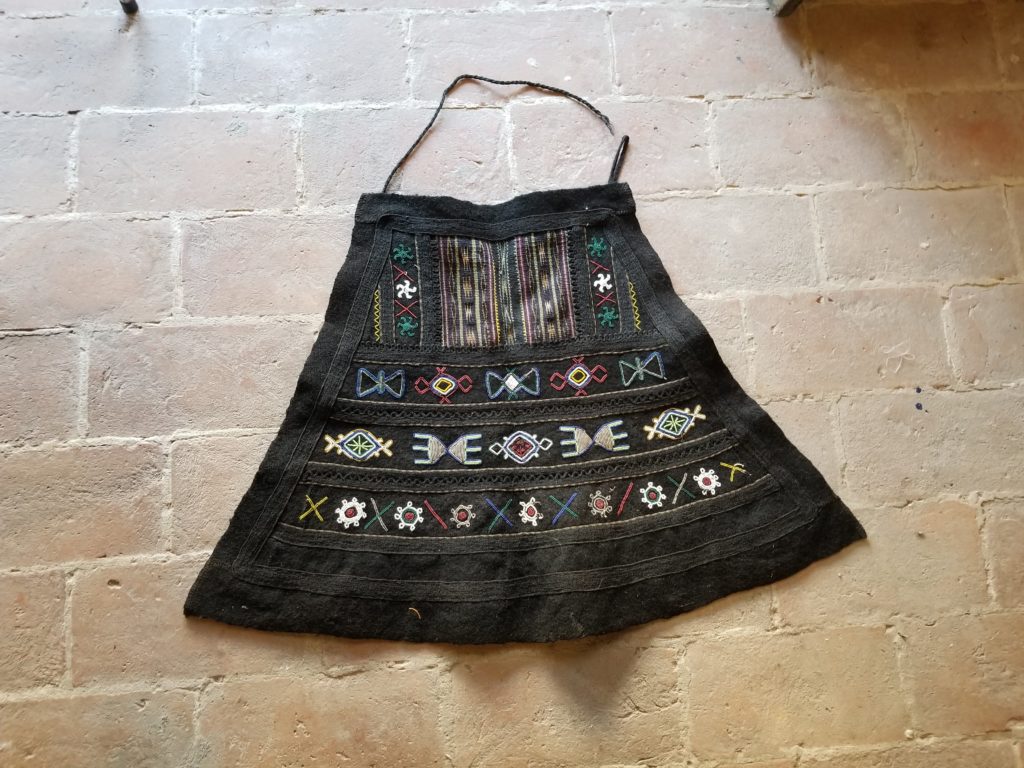
The Jacket
The jacket, also known as the kraholi, is worn to attract attention. Like many other pieces, is heavily embroidered wool. However, since it is built to stand out against the other pieces, more colors are used in its creation. The dyed wool fringe on the sleeves create movement meant to catch the eye (Juka, 2018). Like the belt, the symbols on the kraholi are mostly decorative and reliant on the tastes of the woman who made it (Vuktilaj M., 2018).
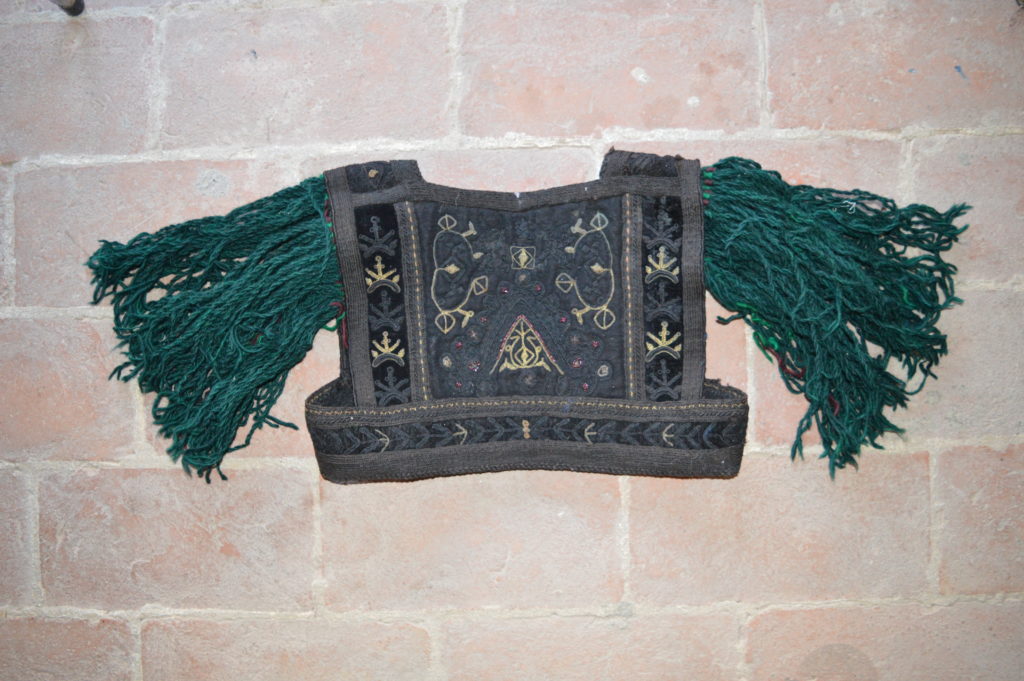
The Headpiece
The kapica is a half circle head piece. It is topped with intricate metalwork, that is mostly silver, with colorful stones set into it. This is worn by younger women (Dukginaj, 2018). The concave shape allows for easier placement and stability in its place atop the woman’s head. Sewn onto the kapica is the veil (Nini, 2013). The veil is often lighter in color and may sometimes be replaced by a thinner strip of heavier, embroidered fabric that resembles a protective snake and lays from the forehead to the back of the head (Dukgilaj, 2018).
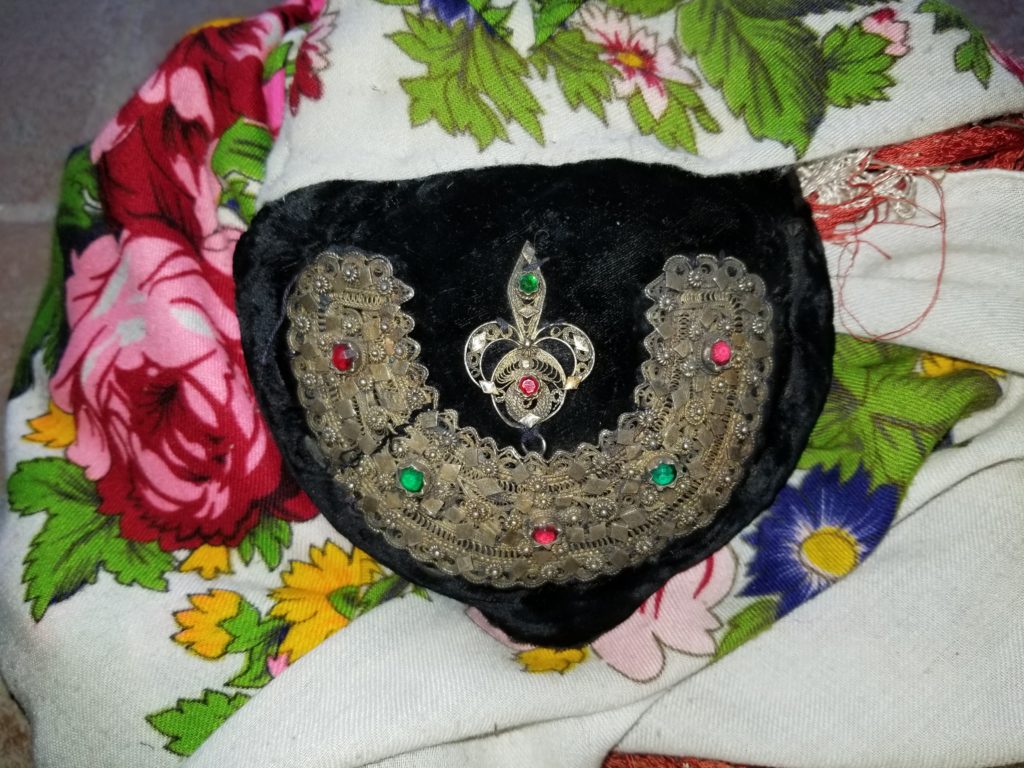
The Socks
The çorapet’s shape in some ways resembles a modern day boot. It is split into two parts: the kallcet and the sock. The kallcet is made of felt and cow skin leather and covers the women’s calf (Nini, 2013). It is made to fit the woman’s calf like a mold because the material lacks elasticity (Dukginaj, 2018). Hooks or buttons are found on the inner side of the kallcet. The sock is a knitted piece attached to the kallcet that covers the foot. This wool thread is looser than spik to allow for movement of the ankle and foot (Dukginaj, 2018).
The outer side of the çorapet is often decorated with snakes believed to protect the wearer and ward off the “evil eye” (Dukginaj, 2018). The evil eye is a folk belief that due to a limited amount of good in the world, a stranger’s envious gaze or stare (the evil eye) would cause withering away, disease, or destruction or property. Snakes were seen as one means of protection from the evil eye eye: rubbing children with snake skin, or an amulet with a dried snake’s head were means of prevention of harm from this curse (Albanian House Dolls and the Evil Eye, 2006). The snakes are placed strategically by a woman’s feet and legs as it is the only part of the lower body not covered by the skirt, which was considered to the most attractive part of the woman’s body to men. The symbol of snakes protected the woman’s body from the evil eye and the gaze of men (Dukginaj, 2018).
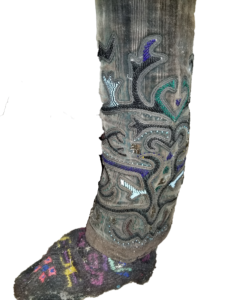
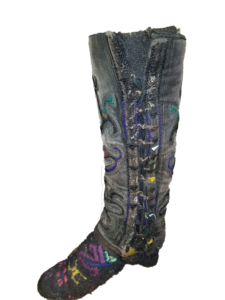
The Shirt
The përparje is the piece of the xhubleta that covers the woman’s chest. The përparje is made differently than the rest of the xhubleta. Every other piece is thick wool, while this piece is knitted out of felt. It is made carefully to be much softer than the other parts of the dress (Nini, 2013). This material allows the breast to take its natural shape, as it is seen as more attractive (Dukginaj, 2018). The ornamentation on this part of the xhubleta varies greatly from woman to woman, as metalwork and filigree are added depending on the socioeconomic status on the family and the budget the woman’s family allocates for her xhubleta (Shkurtaj, 2018).
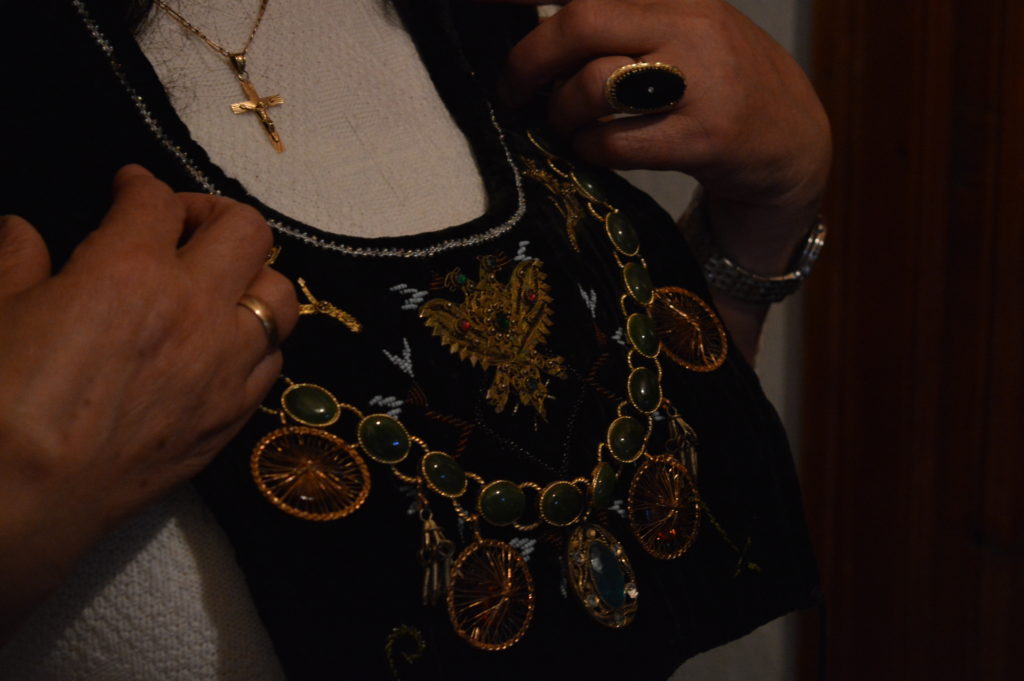
Belt
The belt, or postava, lays along the ribs and stomach of the woman and wraps all the way around her body. The belt is made from wool with embroidered or beaded patterns, attached in the back by an often intricate metal clasp. The patterns and symbols on the belt are different from those found on the skirt or the pështjellaku. These patterns could be used solely as decoration (Nika, 2018), or they may be more abstract symbols representing one’s life. The latter often depict the birth of the women, her pregnancy, the birth of her children, and her death (Berhami, 2018). Once a woman becomes pregnant, she wears a different belt with a specific pattern (Dukgilaj, 2018). This pattern is similar to the vertical stripes of fertility often seen on the apron. The pattern is simple, colorful stripes with no other shapes, meant to protect the baby in the womb (Juka, 2018).

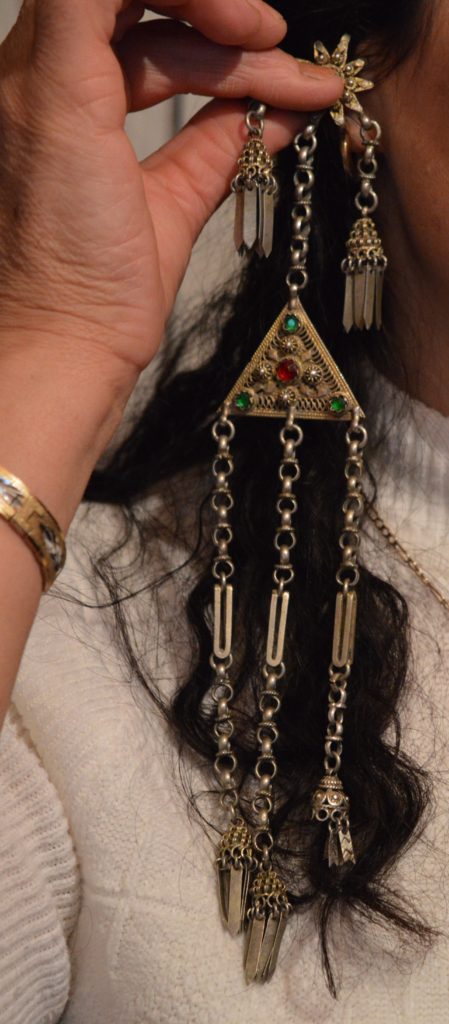
Ornaments and Jewelry
